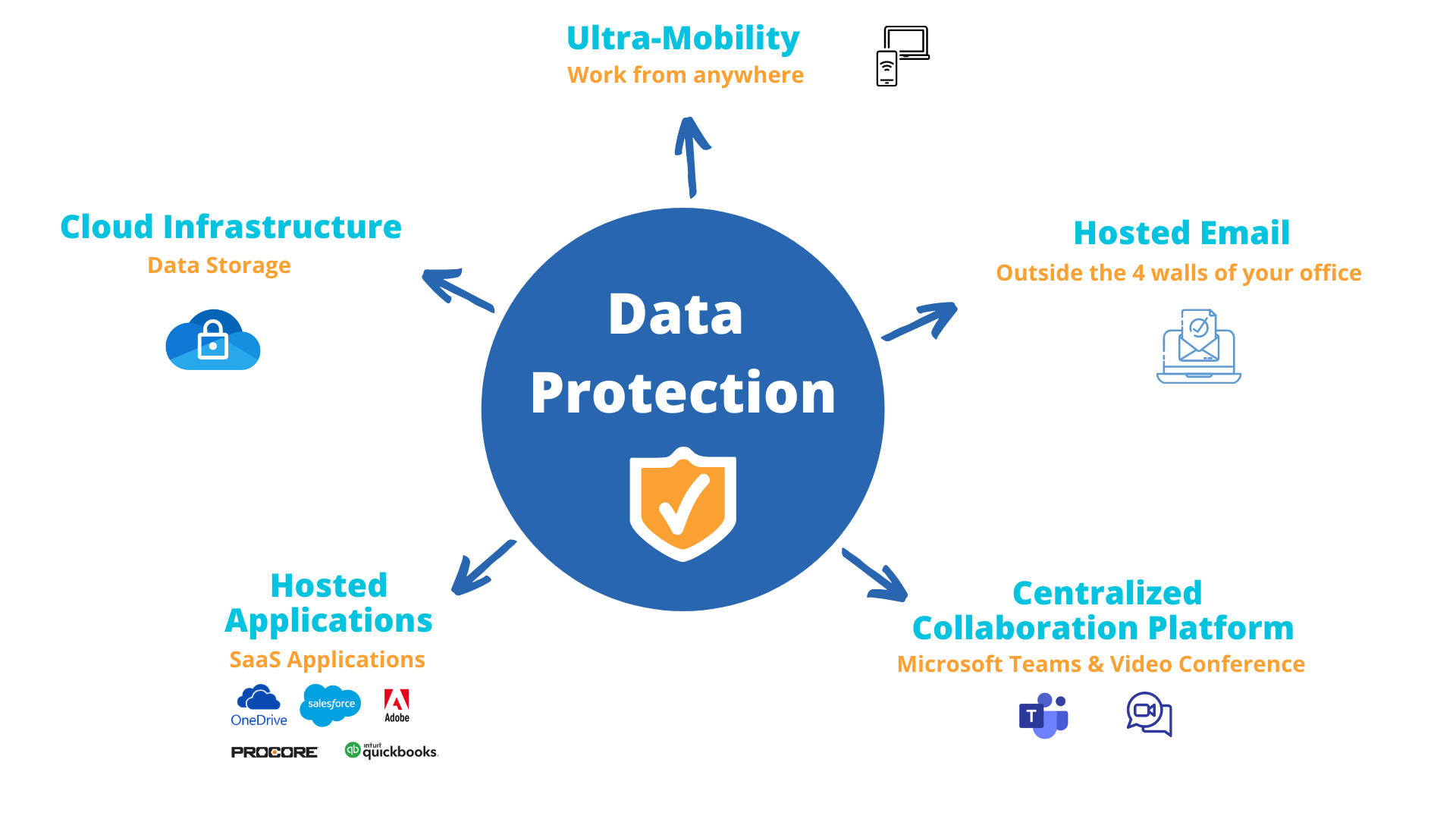
COVID-19 has changed the world in many ways, especially how organizations operate. This reminds us that the future is unpredictable and that things like a natural disaster or a pandemic can occur with very little notice. Businesses who are flexible to adapt have more chances of being successful.
The pandemic has brought new challenges, like working remotely. But the reality is that in Florida, where hurricane season lasts for half of the year, we are used to the concept of things changing rapidly.
Technology plays an important role in making this happen. Having the right flexible technology infrastructure plan in place is the key to business continuity, allowing you to operate from anywhere.
Understanding business agility
A truly agile business embraces remote work with minimal disruption. It means implementing the right technology to allow your business and your employees to function outside of the office or away from the desk. That can be a dining room table, a conference room or a hotel. The list goes on, but you get the point.
The goal is for your employees to be able to perform their duties from anywhere and your organization to continue operations just like it would from the office. Employees can access files, collaborate and communicate without having to be sitting at their desk in the office.
Workforce flexibility is here to stay and it opens a lot of new possibilities for businesses. For example, hiring employees who live in other locations across the globe could potentially diversify your team with a set of different skills, or having an employee in another time zone could help you provide longer support hours to your clients.
Implementing an agility strategy for your business is an important decision. It takes planning and commitment, but it’s achievable with the right roadmap.
Developing a business agility strategy
Most large enterprises have a strategic plan around mobilizing their workforce, but this concept can also be adapted to small and medium sized businesses. When we talk about mobilizing a workforce, we’re talking about mobilizing your business model, not just mobile devices.
Here are some things you should take into consideration when creating a business agility strategy:

- Do all of your employees have laptops?
- Where is your email hosted?
- Can any of your business applications be converted to a cloud-based service so they can be accessed both on the road and in the office?
- How many ways can your employees communicate with you (office phone, cell phone, email, text, instant message, video conference, etc.)? Can that be centralized?
- Is your IT infrastructure dependent on your office’s electricity? How about your office’s internet connection?
- Can you electronically collaborate on a document with a colleague in real-time?
- Do you share files inside your already crowded email inbox?
- Do you have additional mobility tools that allow for safe and secure remote computing?
Will my data be secure?
The mobile component of any business agility plan must include the ability to work securely from anywhere. If data protection isn’t considered or isn’t possible then alternative plans must be made.
Even though an agility plan exponentially increases your cybersecurity risks, those risks can be mitigated. If you ignore them, however, you are a much more vulnerable target.
What about business continuity?
Business continuity planning is the process of creating systems of prevention and recovery to deal with potential threats to an organization. In addition to prevention, the goal is to enable ongoing operations before and during execution of disaster recovery. So, if disaster strikes, how quickly can you get back to normal operating procedures?
Although they are similar in many aspects, business continuity and business agility are two different things. Having an agile business will ensure you have business continuity. All you need is a device and internet connection and you can be as operational as you’d like to be.
Here’s how we can help
This doesn’t have to a challenging process. Talk to your Client Success Manager today to develop and implement a business agility strategy into your framework. If you’re not a client yet, no worries, we’d love to help. Please contact us today!
Share this entry
-
Share on Facebook
Share on Facebook
-
Share on Twitter
Share on Twitter
- Share on Google+
-
Share on Pinterest
Share on Pinterest
- Share on Linkedin
- Share on Tumblr
- Share on Vk
- Share on Reddit
- Share by Mail
Subscribe to our Newsletter
Don’t miss out on the latest news from Entech. Submit your e-mail to subscribe to our monthly e-mail list.
.png?width=360&height=300&name=Logo%20(2).png)









